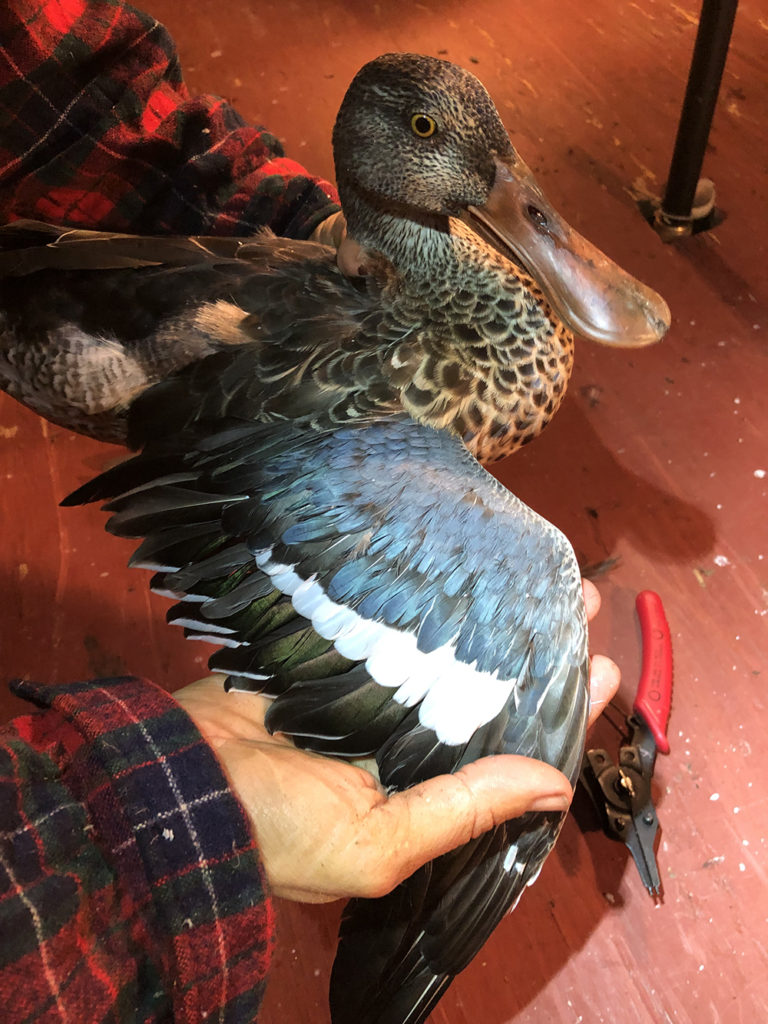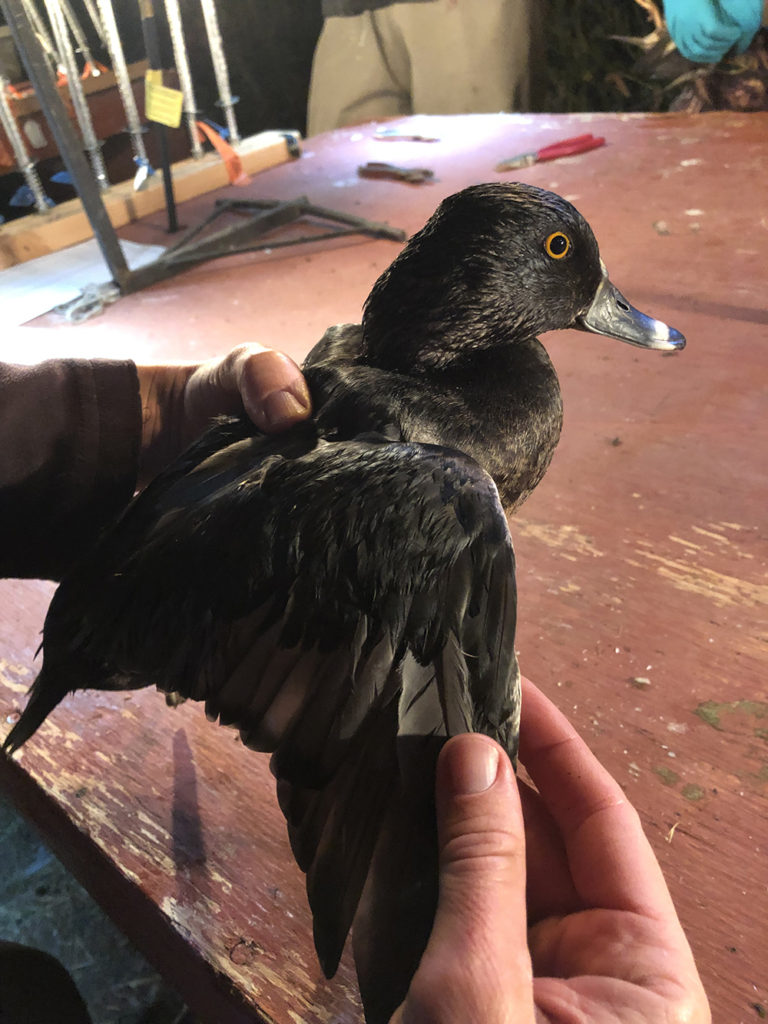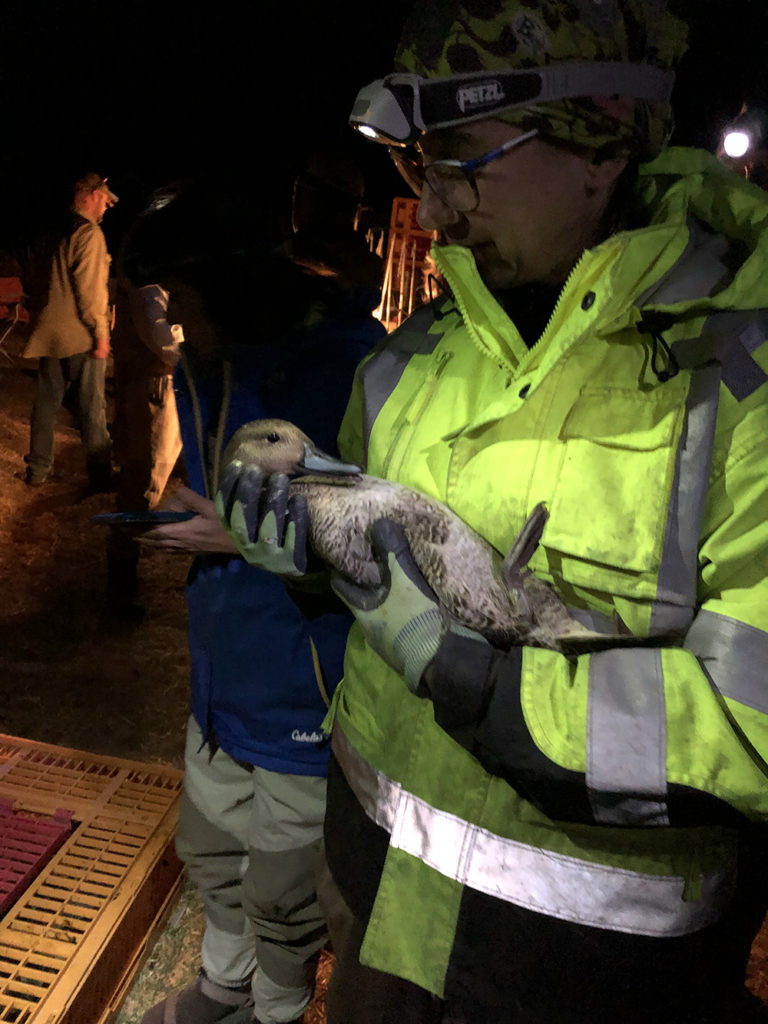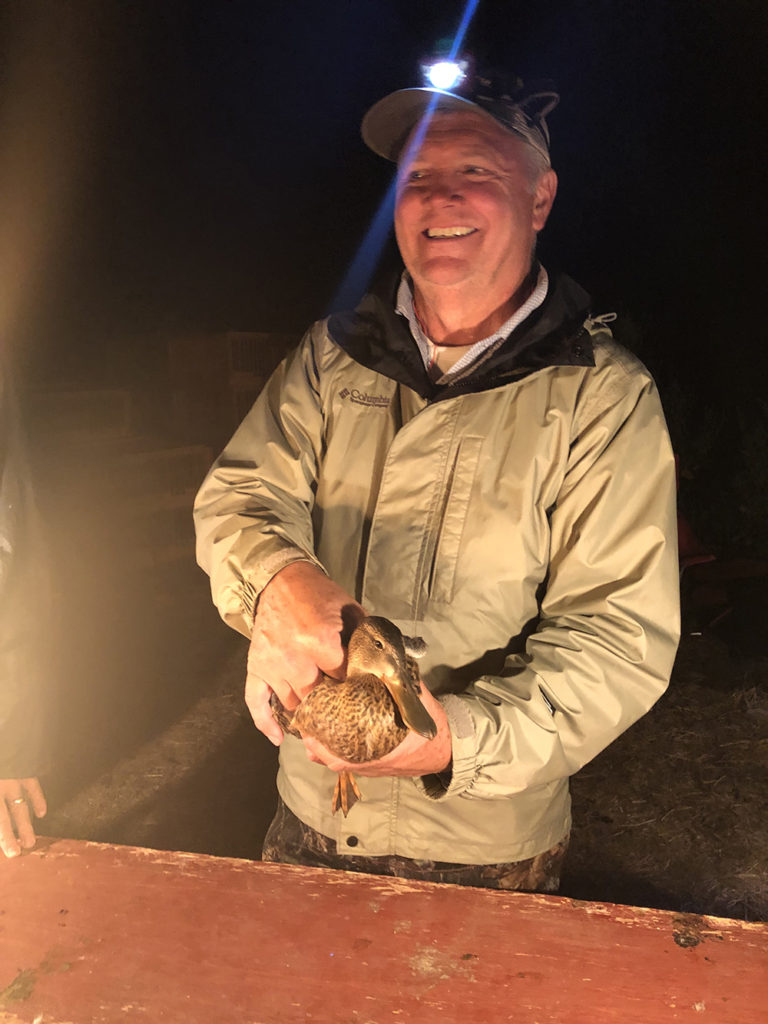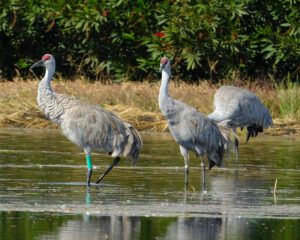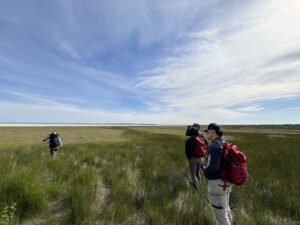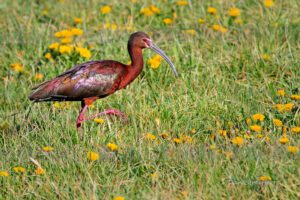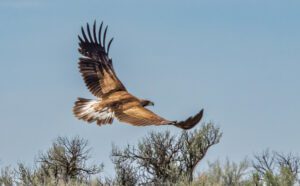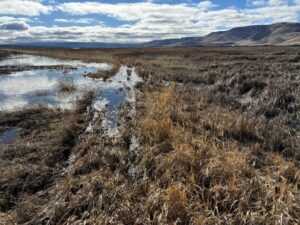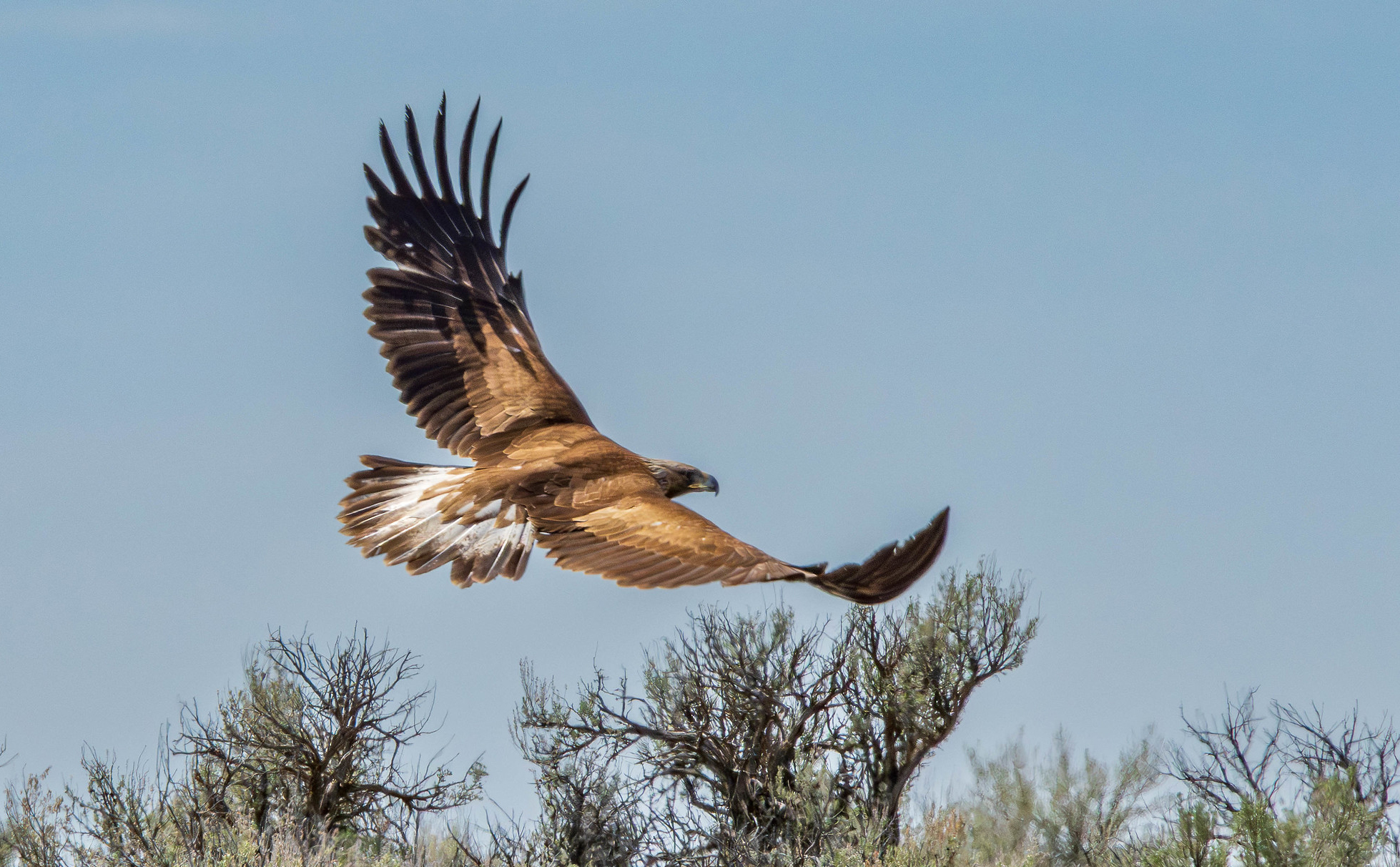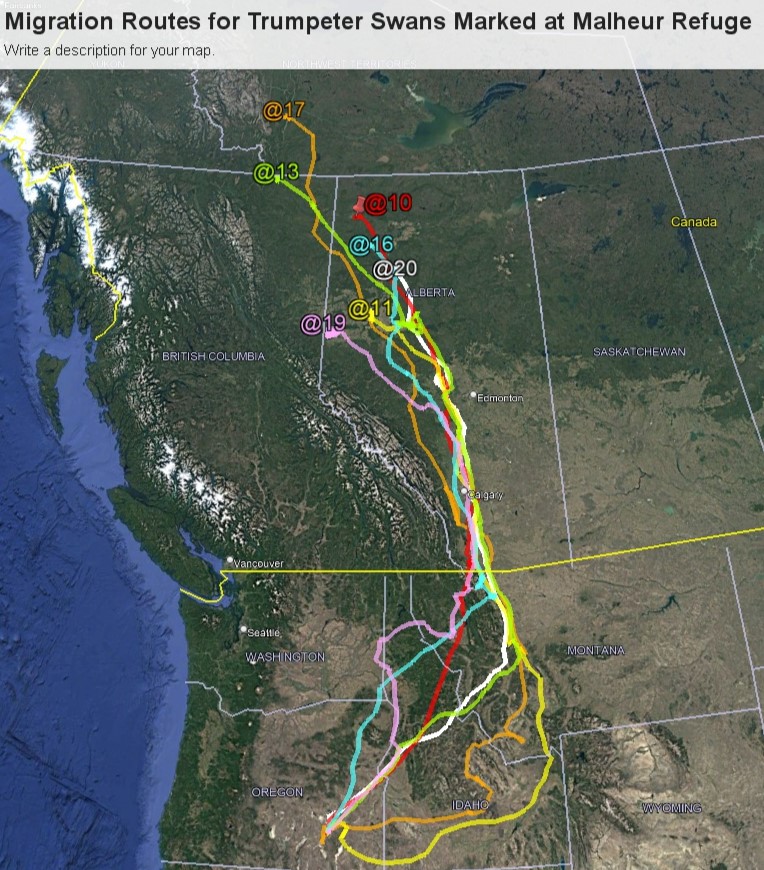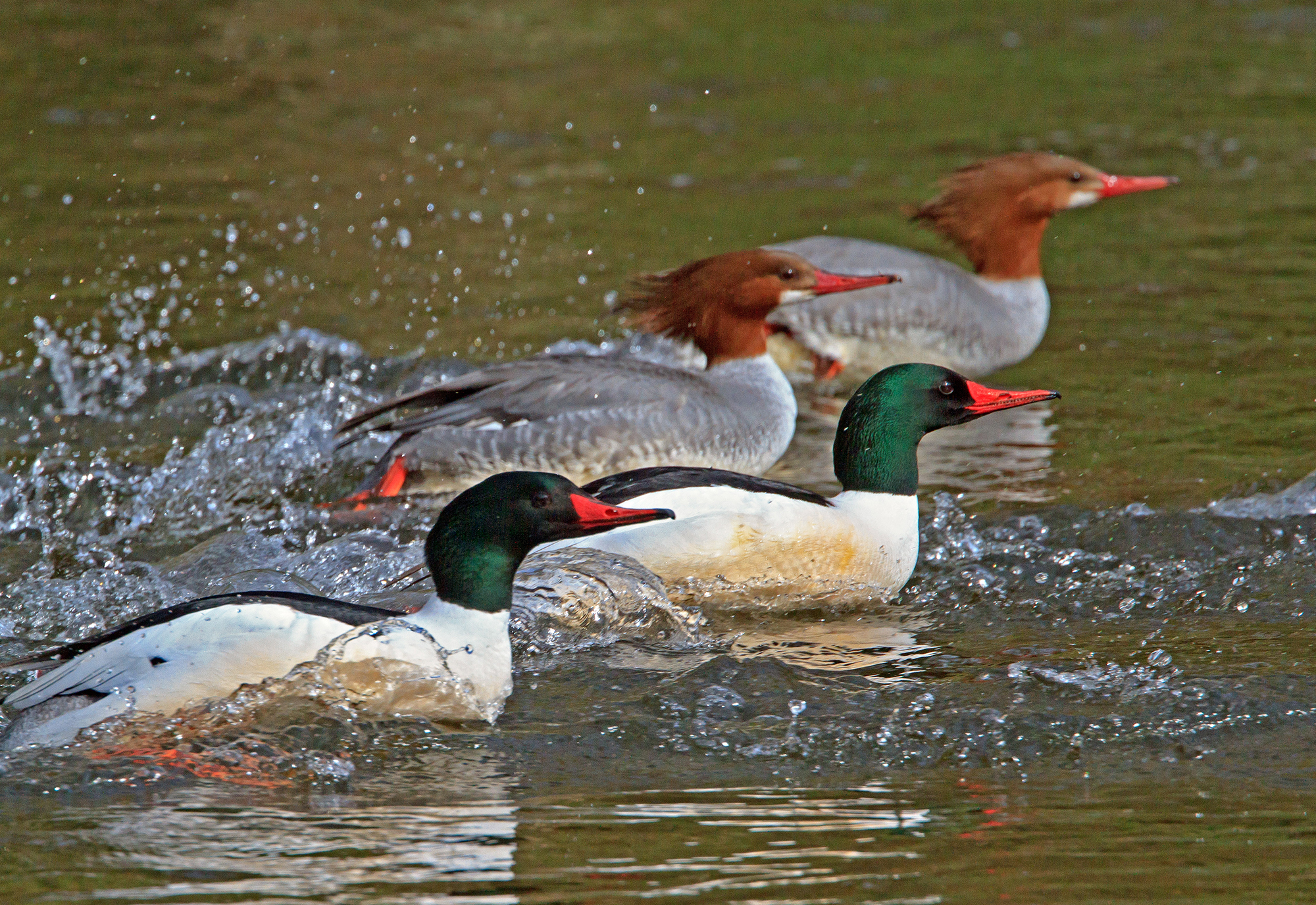Written by Alexa Martinez, Malheur National Wildlife Refuge Wildlife Biologist/Photos by Teresa Wicks
During the months of July and August, staff and volunteers from Oregon Department of Fish and Wildlife (ODFW) and Malheur NWR come together on nights of the new moon for a week of duck banding.
What is the point of duck banding? Duck banding, conducted throughout North America, was originally used as a method to determine which species of waterfowl were traveling through the different migratory flyways, and how many of each species. For Refuges and other wildlife areas, banding also helps to determine the species of waterfowl that are actually utilizing the land for breeding, food, and shelter. Now, biologists use this technique to gather information on points within our four flyways where hunters and others recover waterfowl with bands. The band recovery data show biologists how the harvest is distributed throughout the flyway.
Depending on the location, different techniques are used to capture ducks. At Malheur Refuge, airboats are integral to duck banding operations. The shallow, expansive waterways at the Refuge are best navigated by these highly maneuverable, flat-bottomed watercraft. Airboats also give us the opportunity to capture a diverse variety of waterfowl species, as opposed to capturing a specific range of waterfowl with different methods, such as pre-baiting an area for the use of rocket nets. Instead of attracting only those species that prefer a specific type of bait, airboats allow us to pursue any and all species present in a given area.
Why are these operations conducted at night, under a new moon? In essence, the darker the night the better! We need full use of our spotlights in order to capture these ducks at night. Any additional light (from the moon, for instance) gives ducks the opportunity to see us and elude capture.
Once captured, a leg band is then placed on either leg. This band has unique identification characteristics that describe where, when, and by whom the individual was banded. If this individual was ever found in a different location, we can track it back using the ID and have some sort of idea where this duck was located.
Duck banding in our the area is unique in that we primarily use spotlights and airboats to capture ducks out on the water. This technique has been used since 1993 by ODFW at Summer Lake Wildlife Area in Summer Lake, OR. Collaborating with Marty St. Louis, manager at Summer Lake Wildlife Area, and staff from Malheur NWR, we are able to make an effort to band both locations during the week of the new moon.
It works like this: We have two airboats, each with an airboat operator and two netters. Each netter is on the left and right side of the bow. The driver will then use the spotlight to point at a particular duck on the water and maneuver the boat as close as possible for one of the netters to capture the duck. Once captured, the duck is placed in one of our duck crates located on the boat. Once crates are filled, the ducks are then returned to the banding station where they are identified to a particular species, age and sex. Then a band is placed on their leg. Meanwhile another set of netters and empty crates are out on the airboat gathering more ducks. We repeat this cycle from 10 p.m. to 6 a.m. Talk about a true night shift!
We are still working on processing data from our last duck banding session in August. But during that first weeklong session in July, between Summer Lake Wildlife Area and Malheur NWR a grand total of 1,565 waterfowl were banded! From the grand total, Malheur NWR contributed 1,003 of those individuals from Boca and Malheur Lake!
This amazing effort wouldn’t have been successful without everyone’s help. Special thanks to Marty St. Louis and his crew from ODFW, Friends of Malheur Volunteers, Friends of Malheur summer technician, Refuge volunteers, Portland Audubon, High Desert Partnership technicians, Malheur NWR staff, Paiute Tribe biologists, ONDA volunteers, and National Wild Turkey Federation. It is amazing how many agencies and partners can work together for conservation efforts. It is always a pleasure to work with all sort of personalities during these efforts. Thank you all again for your hard work!


